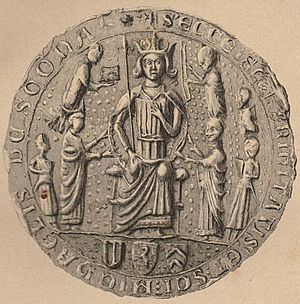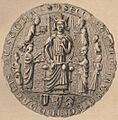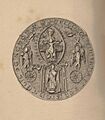Abbot of Scone facts for kids
The Abbot of Scone was a very important leader at Scone Abbey in Scotland. Before 1163, this person was called the Prior of Scone. Later, by the 1500s, they were known as the Commendator of Scone. This leader was in charge of the community of Augustinian canons (a type of priest) and all the lands belonging to the abbey.
King Alexander I started the priory (a smaller type of monastery) at Scone sometime between 1114 and 1120. It became a much bigger and more important place, an abbey, in 1163 or 1164.
The Leaders of Scone Abbey
For many centuries, different people led Scone Abbey. Their titles changed over time, reflecting the abbey's history and how it was managed.
From Prior to Abbot
When Scone was first established, its leader was called the Prior. This was a common title for the head of a priory. Later, when Scone became a full abbey, its leader was given the more important title of Abbot. Many different individuals served as Prior and then Abbot, guiding the community and managing the abbey's affairs for hundreds of years.
The Role of Commendator
By the 16th century, the way abbeys were run began to change. Instead of a traditional abbot chosen by the monks, a new role emerged: the Commendator. This person was often appointed by the king or a powerful family. They might not even be a monk themselves.
For example, William Ruthven, 1st Earl of Gowrie became a Commendator in 1581. However, he lost this position when he was executed in 1584. The abbey's leadership then passed to others, including his son, James Ruthven, 2nd Earl of Gowrie.
In 1608, David Murray took over as Commendator. At this time, Scone Abbey was turned into a "secular lordship." This meant it was no longer a religious institution but became a private estate controlled by a lord. This change marked the end of Scone Abbey as a traditional religious community.
Images for kids





